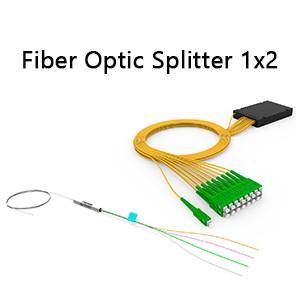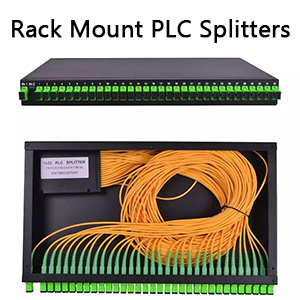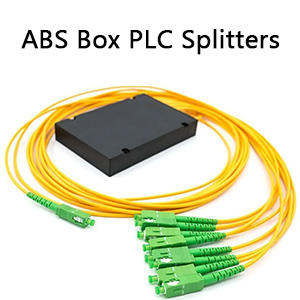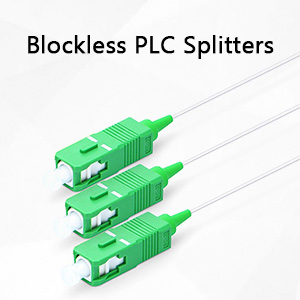In the realm of fiber optics, optical switches are indispensable for their ability to manage the flow of light signals, ensuring the agility and efficiency of network traffic. As the demand for data surges, these switches become more vital in sustaining networks that are efficient, scalable, and robust. This guide delves into the common uses of optical switches, the advantages they bring to each application, and the criteria for selecting the most suitable switch for your specific needs.

Understanding Optical Switches
Optical switches are the conduits that direct light signals within fiber optic networks. They differ from traditional electrical switches by manipulating light paths rather than electrical currents. The technology behind these switches is diverse, including mechanical, MEMS (Micro-Electro-Mechanical Systems), and liquid crystal varieties, each with distinct advantages and ideal scenarios.
Key Applications of Optical Switches
The versatility of optical switches makes them invaluable across various sectors. Here are some primary areas where they enhance network performance:
- Data Centers
As data centers scale to meet the growing internet usage, network efficiency becomes critical. Optical switches offer flexible routing capabilities, allowing data centers to swiftly respond to traffic surges and balance loads across servers. By redirecting optical signals, data centers can prevent server overloads, improve efficiency, and avoid costly infrastructure upgrades.
- Load Balancing: Optical switches evenly distribute traffic, preventing congestion.
- Scalability: They facilitate the seamless integration of new servers and storage.
- Minimal Downtime: In the event of server failure, they enable quick rerouting to maintain service continuity.
- Telecommunications Networks
Optical switches are essential in telecom networks, where reliability is paramount. They provide fault tolerance by rerouting signals during disruptions, minimizing service outages. They also support network upgrades without taking the network offline.
- Path Protection: They ensure service continuity in the event of path failures.
- Network Reconfiguration: They allow for network updates with minimal downtime.
- Cost-Effective Expansion: They simplify the addition of network capacity.
- Testing and Measurement Laboratories
Fiber optic testing labs often require analysis of multiple signal paths. Optical switches streamline this process, enabling researchers to test various paths without manual connection changes, thus speeding up testing and reducing equipment wear.
- Increased Testing Speed: Technicians can switch between test paths quickly.
- Reduced Wear and Tear: Automated switching minimizes physical handling of fibers.
- High Precision: They offer reliable, repeatable results for accurate testing.
- Broadcast and Media
In media production, particularly live broadcasting, network flexibility is crucial. Optical switches provide dynamic routing options, allowing broadcasters to manage bandwidth and switch video feeds seamlessly, which is vital in fast-paced environments.
- Real-Time Routing: They enable quick adjustments for live broadcasts.
- Efficient Bandwidth Allocation: They help manage the high data loads of video feeds.
- Failover Capabilities: They provide automatic rerouting in case of signal interruptions.
Selecting the Right Optical Switch
Choosing the appropriate optical switch involves considering factors such as your specific application, budget, and performance requirements. Here are some key considerations:
- Switching Speed
The speed at which an optical switch reroutes signals varies by type and design. Mechanical switches are generally slower, while MEMS and liquid crystal switches offer faster switching times. For applications requiring rapid switching, such as live broadcasting or real-time data monitoring, select a switch that meets your speed needs.
- Mechanical Switches: Slower; suitable for low-speed applications.
- MEMS Switches: Fast and reliable, ideal for dynamic data environments.
- Liquid Crystal Switches: High-speed switching with low power consumption, suitable for large data centers.
- Network Size and Complexity
For large networks, scalability is crucial. Choose an optical switch that can handle high-density fiber connections and is compatible with your existing network architecture. Modular optical switches are preferable for growing networks, as they allow for easy capacity expansion.
- High-Density Ports: Ideal for extensive fiber connections in data centers and telecom networks.
- Modular Design: Facilitates easy expansion and reduces future upgrade costs.
- Durability and Environmental Tolerance
In industrial or military settings, optical switches must withstand harsh conditions, such as extreme temperatures, vibration, and dust. Rugged optical switches, often with protective housings, are designed for reliable operation under demanding conditions.
- Temperature Tolerance: Consider switches rated for a wide temperature range for industrial use.
- Environmental Sealing: Dust- and moisture-resistant switches are essential for outdoor or rugged environments.
- Budget and Cost of Ownership
While optical switches vary in price, their long-term benefits can offset initial costs. It’s important to balance your budget with required performance features and consider ongoing maintenance and energy costs. Some switches, like MEMS, tend to have lower power consumption, making them more cost-effective over time.
- Initial Cost vs. Long-Term Savings: Choose switches that offer the best value in performance and durability.
- Energy Efficiency: Consider power-saving options, especially for large-scale deployments.
Conclusion: Enhancing Network Efficiency with the Right Optical Switch
Optical Switches are integral to modern fiber optic networks, offering unmatched flexibility and scalability for a wide range of applications. Whether managing data center traffic, ensuring telecom network reliability, facilitating efficient testing, or supporting media production, the right optical switch can significantly enhance network performance.
By evaluating your specific needs — from switching speed to environmental durability — and understanding how each type of optical switch functions, you can make an informed choice that boosts your network’s efficiency and reliability. As networks continue to evolve, optical switches will remain a cornerstone technology, providing the adaptability needed to meet the demands of tomorrow’s high-speed, high-performance fiber optic networks.










